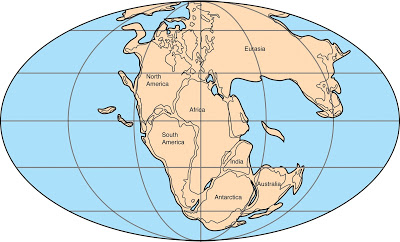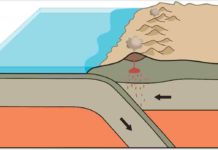
The consolidation of the ancient supercontinent Pangea 300 million years ago played a key role in the formation of the coal that powered the Industrial Revolution and that is still burned for energy in many parts of the world today, Stanford scientists say.
The findings, published in this week’s issue of the journal for the Proceedings of the National Academy of Sciences, contradicts a popular hypothesis, first formally proposed in the 1990s, that attributes the formation of Carboniferous coal to a 60-million-year gap between the appearance of the first forests and the wood-eating microbes and bacteria that could break them down.
“Much of the scientific community was really enamored with this simple, straightforward explanation,” said Kevin Boyce, a geobiologist at Stanford’s School of Earth, Energy & Environmental Sciences. “So, it has not only refused to die, it has become a conventional wisdom.”
In the new study, Boyce and his colleagues took a closer look at this “evolutionary lag” hypothesis, examining the idea from various biochemical and geological perspectives. “Our analysis demonstrates that an evolutionary lag explanation for the creation of ancient coal is inconsistent with geochemistry, sedimentology, paleontology, and biology,” said Matthew Nelsen, a postdoctoral researcher in Boyce’s lab and first author on the new paper.
The scientists examined ancient, organic-rich sediments from North America and showed that not all of the plants that existed during the Carboniferous period, which began about 360 million years ago, possessed high concentrations of lignin, a cell wall polymer that helps give plant tissues their rigidity. Lignin is the biochemical component that, according to the evolutionary lag hypothesis, ancient bacteria and fungi were unable to break down.
The researchers also showed that shifts in lignin abundance in ancient plant fossils had no obvious impact on coal formation. In fact, many Carboniferous coal layers were dominated by the remains of lycopsids, an ancient group of largely unlignified plants. “Central to the evolutionary lag model is the assumption that lignin is the dominant biochemical constituent of coal,” Nelsen said. “However, much of the plant matter that went into forming these coals contained low amounts of lignin.”
The scientists instead argue that the waxing and waning of coal deposits during the Carboniferous period was closely tied to a unique combination of tectonics and climate conditions that existed during the assembly of Pangea.
Synthesizing findings from across various scientific fields, the scientists argue that during the Carboniferous, massive amounts of organic debris accumulated in warm, humid equatorial wetlands.
“If you want to generate coal, you need a productive environment where you’re making lots of plant matter and you also need some way to prevent that plant matter from decaying. Where that happens is in wet environments,” Boyce said.
The other key element that is required to form large coal deposits is an “accommodation space”-essentially a large hole-where organic matter can accumulate over long periods without being eroded away.
“So you need both a wet tropics and a hole to fill. We have an ever-wet tropics now, but we don’t have a hole to fill,” Boyce said. “There’s only a narrow band in time in the Earth’s history where you had both a wet tropics and widespread holes to fill in the tropics, and that’s the Carboniferous.”
During the Carboniferous, amphibian-like creatures were still getting used to life on land, and hawk-sized insects flitted through forests very different from what exists today. “In the modern world, all trees are seed plants more or less. Back then, the trees resembled giant versions of ferns and other groups of plants that are now only small herbs. Conifers were just beginning to appear,” Boyce said.
The Carboniferous was also a time when geologic forces were herding several large land masses together into what would eventually become the massive supercontinent Pangea. Along geologic fault lines where tectonic plates ground against one another, mountain ranges developed, and deep basins formed alongside the new peaks.
The ponderous pace at which the basins were created meant there was plenty of time for organic matter to accumulate, and as the mountains rose, the basins deepened, and even more plant material could pile up.
“With enough time,” Boyce said, “that plant matter was eventually transformed into the coal that powered the Industrial Revolution and helped usher in the modern age. Coal, as dead plant matter, is obviously based in short-term biological processes. And yet, as an important part of the long-term carbon cycle, coal accumulation is largely dictated by geological processes that operate on timescales of many millions of years that are entirely independent of the biology.”
Reference:
Delayed fungal evolution did not cause the Paleozoic peak in coal production, PNAS, DOI: 10.1073/pnas.1517943113
Note: The above post is reprinted from materials provided by Stanford University.










